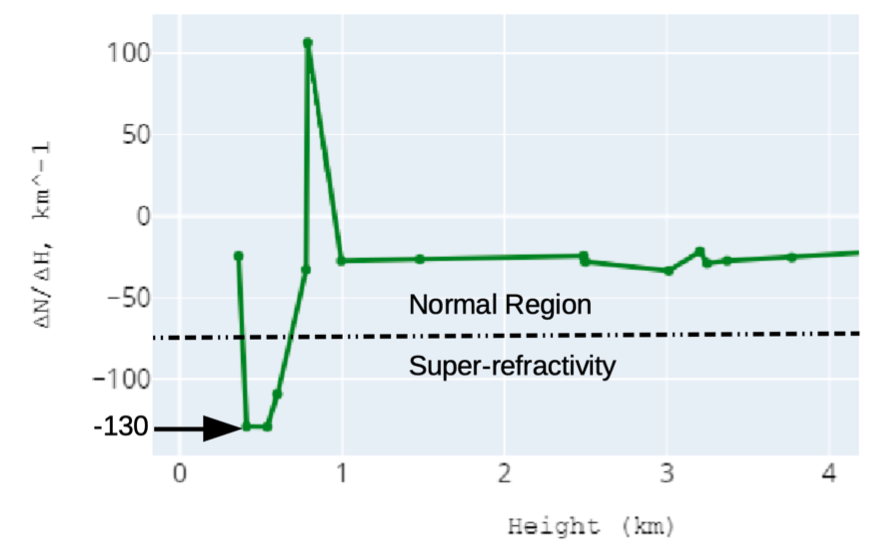tropolora
Tropospheric propagation of LoRa signals
With the growth of IoT deployments there are plenty of anecdotal reports of very long wireless links, well beyond the line of sight. Most reports suggest that these links are related to anomalous tropospheric propagation.

We developed a platform to study tropospheric links based on TheThingsNetwork, a popular LoRaWAN-based infrastructure. Deploying a few probes that periodically transmit short frames allows the detection of tropospheric propagation phenomena and also sheds light in the specific kind of anomalous propagation involved in each case, by leveraging meteorological publicly available data from radiosondes. We have developed a tool that automatically sorts out paths in which the line of sight is blocked, so that the propagation can only be accounted for by diffraction, super-refraction, tropospheric ducting or a combination of diffraction and super-refraction. The hardware deployed is inexpensive and by leveraging the existing infrastructure of a great number of TTN gateways and public meteorological data, it can be easily scaled up by simply adding additional end-nodes.
More info about the experiments here.
Our paper “TROPPO LoRa:TROPospheric Personal Observatory using LoRa signals” can be downloaded here.
Marco Zennaro, Ermanno Pietrosemoli, Marco Rainone, Daniele Trinchero, Mattia Poletti, Giovanni Colucci. “TROPPO LoRa: TROPospheric Personal Observatory using LoRa signals.” In: FRUGALTHINGS’20: Proceedings of the 1st Workshop on Experiences with the Design and Implementation of Frugal Smart Objects, September 2020 Pages 24–29 https://doi.org/10.1145/3410670.3410856